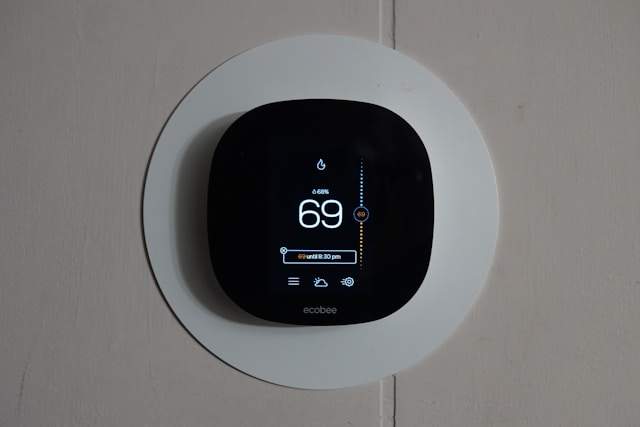
Many people believe that being eco-friendly means giving up modern conveniences. The idea of sacrificing comfort for eco-friendly living seems daunting to many. This notion may deter some from adopting greener habits vital for environmental stability. However, is this trade-off really necessary? This blog post aims to debunk the myths surrounding eco-friendliness and comfort, illustrating that you can live sustainably without compromising on the conveniences of modern life. We will explore practical examples and the latest technological advancements that facilitate eco-friendly living, showing that it’s possible to seamlessly integrate sustainability into everyday life. Join us as we discover how being environmentally conscious can go hand-in-hand with enjoying a comfortable and convenient lifestyle.
Understanding Sustainability and Convenience
Sustainability refers to using resources in a manner that prevents their depletion, ensuring their availability for future generations. Convenience, on the other hand, is often associated with personal comfort, typically characterized by immediate gratification without much personal effort. In modern society, these concepts are frequently seen as conflicting.
Many assume that adopting eco-friendly practices leads to less convenience. However, this perception is outdated as continuous innovations and societal shifts increasingly demonstrate that green choices can enhance convenience. By redefining what convenience means—shifting focus from speed to longevity and quality—we see that this lifestyle can streamline our lives and even reduce long-term effort.

Debunking the Myth of Sacrificing Comfort for Eco-friendly Living
The common misconception that sustainable living requires significant sacrifice pervades society, deterring many from adopting eco-friendly habits. People often assume that eco-friendly options like electric vehicles, renewable energy, or sustainable materials are less effective or more troublesome. For instance, the idea that electric cars are inconvenient due to limited range and sparse charging stations is a prevalent concern.
However, ongoing technological advancements are enhancing the usability and convenience of such options. Real-life examples from cities like Copenhagen and Amsterdam, which have embraced cycling and efficient public transport systems, show that communities can integrate these practices without losing comfort. These examples illustrate how sustainability can coexist with convenience, debunking the myth that eco-friendliness necessitates discomfort and inconvenience and showing that adopting green technologies and methods can enhance our daily living experience.
Practical Tips for Balancing Sustainability with Convenience
Adopting green practices at home does not mean sacrificing comfort for eco-friendly living. Simple modifications can have profound impacts. For instance, switching to LED lighting offers long-lasting light with significantly reduced energy consumption. Installing low-flow showerheads can conserve water without diminishing the quality of your shower experience. These small changes are easy to implement and seamlessly integrate into daily routines. That proves that environmental consciousness does not require giving up the comforts of modern life. By making informed choices about our products, we can support sustainable practices while maintaining our living standards.

Economic and Psychological Benefits of Sustainable Living
Embracing sustainability does not just help the planet—it can also be economically beneficial. Green technologies and practices reduce utility bills due to reduced energy and water usage. For instance, homeowners installing solar panels see decreased electricity costs, potential tax incentives, and increased property values over time. Also, governments and local authorities worldwide offer various incentives for eco-friendly home modifications, which can lead to significant savings.
Beyond the financial advantages, there are substantial psychological benefits to living sustainably. Engaging in sustainable practices can lead to increased personal satisfaction and mental well-being. Knowing that you contribute to environmental preservation can enhance your sense of purpose and fulfillment. This connection to a larger cause can alleviate anxiety about environmental issues and foster a greater sense of community with others who share eco-friendly values.
Integrating Sustainability into Major Life Changes
Adopting an eco-friendly lifestyle involves more than just daily habits; it extends into major life decisions, such as moving to a new home. Relocating offers a unique opportunity to reassess and significantly enhance your commitment to sustainability. For instance, when moving, consider selecting a new community that prioritizes green spaces, has robust recycling programs, or offers accessible public transportation to reduce your carbon footprint.
In addition, during the move, you can donate old items rather than dispose of them, buy furniture made from sustainable materials, and ensure energy-efficient appliances are installed in your new home. Also, partnering with a company like Good Neighbors Moving Company, which specializes in handling residential moves efficiently, ensures a smooth transition. They offer services such as climate-controlled storage solutions and careful handling of delicate items, which can simplify the logistics of your move and allow you to concentrate on the environmental aspects of your new home. That lets you focus more on setting up an eco-friendly home from day one.
The Role of Technology in Eco-Friendly Living
Technological innovations have dramatically improved our capacity to live sustainably without sacrificing convenience. Consider energy-efficient appliances that cut down power usage while maintaining performance. There are also smart thermostats that optimize heating and cooling for both comfort and energy conservation. These technologies also offer enhanced usability and personal comfort. They show how integrating technology helps bridge the gap between sustainability and convenience. That shows that the modern eco-friendly lifestyle can be both comfortable and convenient. Also, future technological advancements promise even greater efficiencies, potentially transforming the landscape of sustainable lifestyles.

In Conclusion
This discussion underscores that sacrificing comfort for eco-friendly living is more myth than reality. Sustainable living does not have to be uncomfortable or inconvenient. In truth, the right approach and technologies can enhance our quality of life. We encourage you to reevaluate your perceptions of living sustainably and experiment with the practical tips we’ve shared. Start with manageable changes and observe how they can positively impact your comfort and the environment. By reconsidering the relationship between eco-friendliness and convenience, we can all contribute to a healthier world without preceding the comforts we enjoy. Embrace eco-friendly living; it’s a choice that benefits both the planet and our quality of life.
